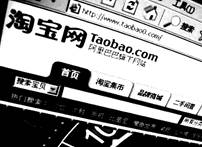“Who needs a shopping mall if you have Taobao?” says Wang Lin, 28, a writer in Beijing.
Taobao, China’s largest online shopping web site, has become an important part of Wang Lin’s life. She spends lots of money on Taobao.
A growing number of Chinese Internet users like Wang have found the fun of online shopping. Most online shoppers are students or young workers. More women shop on line than men. Clothing and home-use products are the most popular on line.
It was reported that more than 250 billion(十亿) yuan was spent on online shopping last year, 80% through Taobao.
Taobao means “looking for treasure(珠宝)” in Chinese. People can find almost everything they need on Taobao, from clothes to books, from candies to DVD players.
You may ask the security of online shopping, Wang Lin said, “It’s very safe and convenient. Unless you receive the products from the sellers and are satisfied(满意的) with them, the shop owner will not get the money. You can also get your money back if you want to return the products.”
小题1:The most popular things on line are ________.
A. candies and DVD players
B. clothes and books
C. clothing and home-use products
小题2:Taobao is ________.
A. a shopping mall
B. an online shopper
C. an online shopping web site
小题3:Most online shoppers are ________.
A. young people B. women C. men
小题4:The underlined word “security” may mean ________.
A. 质量 B. 安全 C. 信誉
小题5:The best title(标题) of the passage is ________.
A. Wang Lin’s life
B. Online shopping in China
C. Shopping on line is not safe

